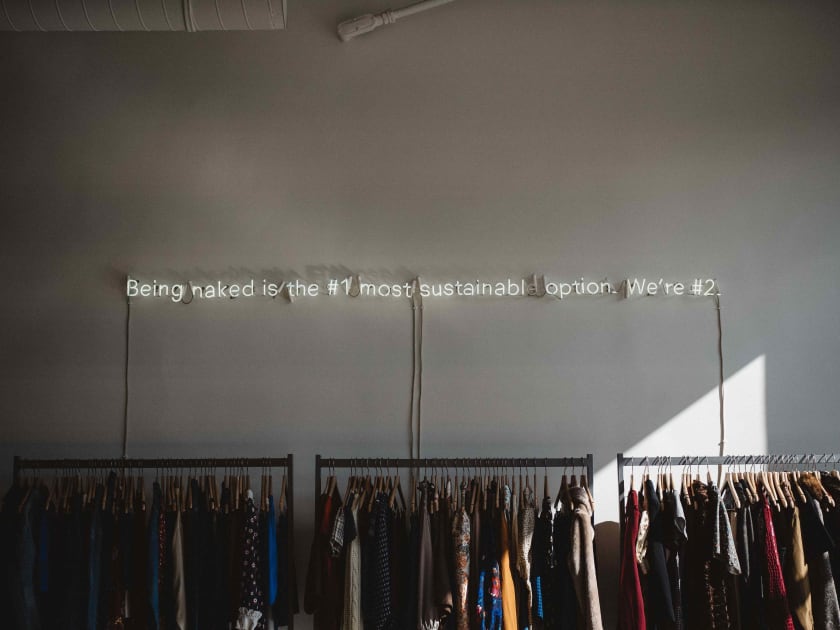Which of the UN Sustainable Development Goals does fashion support?



Summary: The UN sustainability goals have officially begun the countdown for sustainable production and consumption to heal the earth and make our actions climate neutral. The fashion industry is among the top 5 contributors to the global carbon footprint.
The UN Sustainable Development Goals were adopted by all member countries at the historic United Nations Summit in 2015. These global goals set the clock for sustainable development and living by the year 2030. Human rights, gender equality, ethical production, and responsible consumption are at the heart of the 17 UN sustainability goals. The fashion department has a stake in these goals and a lot of ground to cover when it comes to equal rights and wages for women, ethical production, and ensuring the prosperity and protection of our planet and its natural resources.
The Sustainability 2030 Goals the Fashion Industry Can Support
While the industry supports all the goals outlined by the UN, there are key areas where it can directly make an immediate and recognizable difference. These goals can help the fashion industry reduce its carbon footprint while ensuring the sustainable development of lives, livelihoods, and the earth. Here are some of the key goals identified by the UN as part of its sustainability 2030 countdown, which the fashion industry can support.
Goal 1: End Poverty in All Its Forms Everywhere
This sustainability goal aims at eradicating extreme poverty by 2030. This group includes people who make less than $1.25 per day. The fashion industry can start by adopting a universal fair wage policy for all employees. To reduce poverty, fashion brands can promote sustainable livelihoods, ethical working conditions, and community initiatives.
Goal 5: Achieve Gender Equality
The fifth goal aims to achieve gender equality and the empowerment of women. Among the 60 million garment workers directly employed by the fashion industry worldwide, 3 out of 4 are women. The fashion labels should partner with suppliers who provide financial security to these women and a healthy work environment.
Goal 6: Water and Sanitation for All
This sustainability goal is directly linked to sustainable livelihoods. Whether it is the release of wastewater into marine ecosystems or contaminating the drinking water supply, the fashion industry must recycle its water in production and treat it before discharging it into freshwater systems. This helps in the attainment of Goals 1 and 5 by enabling access to safe water and sanitation for the poor and the gender-displaced population.
Goal 7: Affordable and Clean Energy

Reduced dependence on fossil fuels is one of the areas where the fashion industry can contribute significantly. By adopting cleaner sources of energy like solar and wind power and biogas in all the stages of clothing production, including materials, manufacturing, and products, brands can limit their impact on climate change.
Goal 8: Gender Equality
With women constituting more than 75% of the total workforce in the fashion industry, it must bridge the gap between men and women and provide all their workers a fair and equal wage. As a contribution to the UN sustainability goals, the fashion industry should invest in their workers’ livelihoods, including women who are largely impoverished and have suffered different forms of abuse.
Goal 12: Responsible Consumption and Production

According to reports, global consumption of garments is at 400% of the levels that prevailed just twenty years ago. This reliance on fast fashion by the industry has created a behavior pattern among manufacturers and users to keep up with emerging trends to grab attention and business. Responsible consumption and production demand that the industry make the switch to the ethical sourcing of raw materials, recycle them, encourage slow fashion, and produce more long-lasting clothing lines.
Goal 13: Climate Action
This is the foundation of all UN sustainability goals, and it is the reason why the UN established the Sustainable Development Goals for 2030. The fashion industry has a major carbon footprint and is responsible for contaminating marine ecosystems with microplastics from synthetic fibers. Climate action is the need of the hour. The fashion industry should switch to recycling resources, reduce dependence on polythene, and adopt zero-waste production processes. It should encourage customers to not throw away used clothes so they do not end up in landfills and add to the carbon footprint.
Fashion Industry’s Support of the UN Sustainability Goals is a Necessity
The global fashion industry is worth a mind-boggling US$2.5 trillion. But this massive empire has been built on a trail of climate-negative and energy-intensive measures over the years. As per the United Nations Environment Programme, the fashion industry alone is responsible for up to 10 percent of the tidal carbon emissions on earth. It also accounts for 20 percent of the total plastic produced each year, making it one of the most significant contributors to the damage to marine and terrestrial ecosystems. Supporting the UN sustainability goals for 2032 is a good place to start rectifying its mistakes and reducing its carbon footprint on the earth.
Key Takeaways
- With more than 60 million people directly associated with the fashion industry globally—most of them being women—the industry needs to adopt fair wages for women workers, promote a healthy work environment, and pay a minimum daily wage across the board.
- The fashion industry needs to play its part in sustainability by bringing down water pollution and carbon emissions.

Fashinza can help you connect with manufacturers who are environment-conscious and use sustainable practices to meet the sustainability goals.
Speak to our expert today to find out how you can switch to sustainable sourcing and manufacturing and become carbon-neutral in your operations.



















